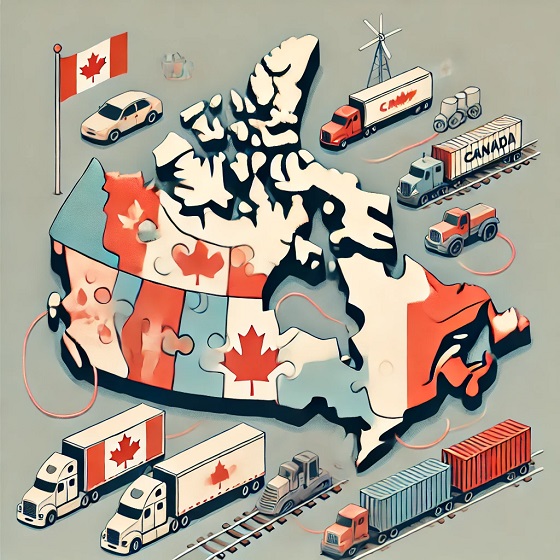Alberta
Alberta seeing spike in syphilis cases

Rates of syphilis in Alberta on the rise
Infectious and congenital syphilis rates have escalated across the province over the past five years, with a sharp increase in 2018.
The rapid increase in syphilis cases has spurred Alberta’s chief medical officer of health, Dr. Deena Hinshaw, to declare a provincial outbreak and encourage Albertans to get tested and protect themselves.
“We need to emphasize for all Albertans: Sexually Transmitted Infections (STIs) are a risk to anyone who is sexually active, particularly people who have new sex partners and are not using protection. I encourage anyone who is sexually active to get tested regularly. Anyone in Alberta can access STI testing and treatment for free.”
In response to the sharp rise in 2018, a provincial outbreak coordination committee composed of Alberta Health, Alberta Health Services (AHS) and other provincial health officials has been activated. Over the next three months, the committee will develop a coordinated strategy and determine concrete actions to increase STI testing, promote public awareness and reduce the overall number of syphilis cases in Alberta.
“Sexual health is an important part of overall health. We are working with community partners to remove stigma and increase awareness about STI testing services throughout Alberta. If you are sexually active, make regular STI testing part of your health routine.”
A total of 1,536 cases of infectious syphilis were reported in 2018 compared to 161 in 2014, almost a tenfold increase. The rate of infectious syphilis has not been this high in Alberta since 1948.
Congenital syphilis, which occurs when a child is born to a mother with syphilis, is a severe, disabling and life-threatening disease. While congenital syphilis cases were rare before the outbreak, there were 22 congenital syphilis cases between 2014 and 2018, one of which was stillborn.
Consistent and correct condom use is important protection against STIs such as syphilis. Like other STIs, the symptoms of syphilis may not be obvious. Health experts recommend sexually active people, regardless of gender, age or sexual orientation, get tested every three to six months if they:
- have a sexual partner with a known STI
- have a new sexual partner or multiple or anonymous sexual partners
- have previous history of an STI diagnosis
- have been sexually assaulted
Prenatal care including syphilis testing is available for all Albertans. It is critical that anyone who is pregnant seeks early prenatal care and testing for syphilis during pregnancy.
Anyone experiencing STI-related symptoms should seek testing through their local health-care provider. Call Health Link at 811, visit a STI or sexual health clinic or speak to a family doctor to find testing and treatment options.
Quick facts
- 2018 case counts for infectious syphilis by AHS zone:
- South Zone: 31 cases, an increase of 138.5 per cent compared to 2017
- Calgary Zone: 206 cases, an increase of 7.3 per cent compared to 2017
- Central Zone: 88 cases, an increase of 266.7 per cent compared to 2017
- Edmonton Zone: 977 cases, an increase of 305.4 per cent compared to 2017
- North Zone: 208 cases, an increase of 324.5 per cent compared to 2017
- For further breakdown of STI 2018 numbers, see the 2018 STI and HIV Summary Report.
- Alberta Health works with AHS and community organizations towards prevention, health promotion, outreach testing, education, harm reduction, and addressing stigma. Previous actions include:
- Grants to the Alberta Community Council on HIV to support community organizations across the province to prevent and reduce STIs, reduce harm associated with the non-medical consumption of substances and support health in their own geographic locations.
- Alberta Health has provided three one-time grants totalling a combined $2 million since 2017 to combat the rising rates of STI, including syphilis, focusing on raising awareness and education, reducing stigma and increasing testing and treatment.
- Since 2016, Alberta Health Services and Alberta Health have been working with over 100 provincial partners to develop innovative approaches to increasing access to STI services across the province.
Alberta
Low oil prices could have big consequences for Alberta’s finances

From the Fraser Institute
By Tegan Hill
Amid the tariff war, the price of West Texas Intermediate oil—a common benchmark—recently dropped below US$60 per barrel. Given every $1 drop in oil prices is an estimated $750 million hit to provincial revenues, if oil prices remain low for long, there could be big implications for Alberta’s budget.
The Smith government already projects a $5.2 billion budget deficit in 2025/26 with continued deficits over the following two years. This year’s deficit is based on oil prices averaging US$68.00 per barrel. While the budget does include a $4 billion “contingency” for unforeseen events, given the economic and fiscal impact of Trump’s tariffs, it could quickly be eaten up.
Budget deficits come with costs for Albertans, who will already pay a projected $600 each in provincial government debt interest in 2025/26. That’s money that could have gone towards health care and education, or even tax relief.
Unfortunately, this is all part of the resource revenue rollercoaster that’s are all too familiar to Albertans.
Resource revenue (including oil and gas royalties) is inherently volatile. In the last 10 years alone, it has been as high as $25.2 billion in 2022/23 and as low as $2.8 billion in 2015/16. The provincial government typically enjoys budget surpluses—and increases government spending—when oil prices and resource revenue is relatively high, but is thrown into deficits when resource revenues inevitably fall.
Fortunately, the Smith government can mitigate this volatility.
The key is limiting the level of resource revenue included in the budget to a set stable amount. Any resource revenue above that stable amount is automatically saved in a rainy-day fund to be withdrawn to maintain that stable amount in the budget during years of relatively low resource revenue. The logic is simple: save during the good times so you can weather the storm during bad times.
Indeed, if the Smith government had created a rainy-day account in 2023, for example, it could have already built up a sizeable fund to help stabilize the budget when resource revenue declines. While the Smith government has deposited some money in the Heritage Fund in recent years, it has not created a dedicated rainy-day account or introduced a similar mechanism to help stabilize provincial finances.
Limiting the amount of resource revenue in the budget, particularly during times of relatively high resource revenue, also tempers demand for higher spending, which is only fiscally sustainable with permanently high resource revenues. In other words, if the government creates a rainy-day account, spending would become more closely align with stable ongoing levels of revenue.
And it’s not too late. To end the boom-bust cycle and finally help stabilize provincial finances, the Smith government should create a rainy-day account.
Alberta
Governments in Alberta should spur homebuilding amid population explosion

From the Fraser Institute
By Tegan Hill and Austin Thompson
In 2024, construction started on 47,827 housing units—the most since 48,336 units in 2007 when population growth was less than half of what it was in 2024.
Alberta has long been viewed as an oasis in Canada’s overheated housing market—a refuge for Canadians priced out of high-cost centres such as Vancouver and Toronto. But the oasis is starting to dry up. House prices and rents in the province have spiked by about one-third since the start of the pandemic. According to a recent Maru poll, more than 70 per cent of Calgarians and Edmontonians doubt they will ever be able to afford a home in their city. Which raises the question: how much longer can this go on?
Alberta’s housing affordability problem reflects a simple reality—not enough homes have been built to accommodate the province’s growing population. The result? More Albertans competing for the same homes and rental units, pushing prices higher.
Population growth has always been volatile in Alberta, but the recent surge, fuelled by record levels of immigration, is unprecedented. Alberta has set new population growth records every year since 2022, culminating in the largest-ever increase of 186,704 new residents in 2024—nearly 70 per cent more than the largest pre-pandemic increase in 2013.
Homebuilding has increased, but not enough to keep pace with the rise in population. In 2024, construction started on 47,827 housing units—the most since 48,336 units in 2007 when population growth was less than half of what it was in 2024.
Moreover, from 1972 to 2019, Alberta added 2.1 new residents (on average) for every housing unit started compared to 3.9 new residents for every housing unit started in 2024. Put differently, today nearly twice as many new residents are potentially competing for each new home compared to historical norms.
While Alberta attracts more Canadians from other provinces than any other province, federal immigration and residency policies drive Alberta’s population growth. So while the provincial government has little control over its population growth, provincial and municipal governments can affect the pace of homebuilding.
For example, recent provincial amendments to the city charters in Calgary and Edmonton have helped standardize building codes, which should minimize cost and complexity for builders who operate across different jurisdictions. Municipal zoning reforms in Calgary, Edmonton and Red Deer have made it easier to build higher-density housing, and Lethbridge and Medicine Hat may soon follow suit. These changes should make it easier and faster to build homes, helping Alberta maintain some of the least restrictive building rules and quickest approval timelines in Canada.
There is, however, room for improvement. Policymakers at both the provincial and municipal level should streamline rules for building, reduce regulatory uncertainty and development costs, and shorten timelines for permit approvals. Calgary, for instance, imposes fees on developers to fund a wide array of public infrastructure—including roads, sewers, libraries, even buses—while Edmonton currently only imposes fees to fund the construction of new firehalls.
It’s difficult to say how long Alberta’s housing affordability woes will endure, but the situation is unlikely to improve unless homebuilding increases, spurred by government policies that facilitate more development.
-

 Alberta1 day ago
Alberta1 day agoGovernments in Alberta should spur homebuilding amid population explosion
-

 armed forces1 day ago
armed forces1 day agoYet another struggling soldier says Veteran Affairs Canada offered him euthanasia
-

 International24 hours ago
International24 hours agoHistory in the making? Trump, Zelensky hold meeting about Ukraine war in Vatican ahead of Francis’ funeral
-

 Alberta24 hours ago
Alberta24 hours agoLow oil prices could have big consequences for Alberta’s finances
-

 Business24 hours ago
Business24 hours agoIt Took Trump To Get Canada Serious About Free Trade With Itself
-

 conflict1 day ago
conflict1 day agoWhy are the globalists so opposed to Trump’s efforts to make peace in Ukraine?
-

 2025 Federal Election1 day ago
2025 Federal Election1 day agoCarney’s budget is worse than Trudeau’s
-

 C2C Journal19 hours ago
C2C Journal19 hours ago“Freedom of Expression Should Win Every Time”: In Conversation with Freedom Convoy Trial Lawyer Lawrence Greenspon








